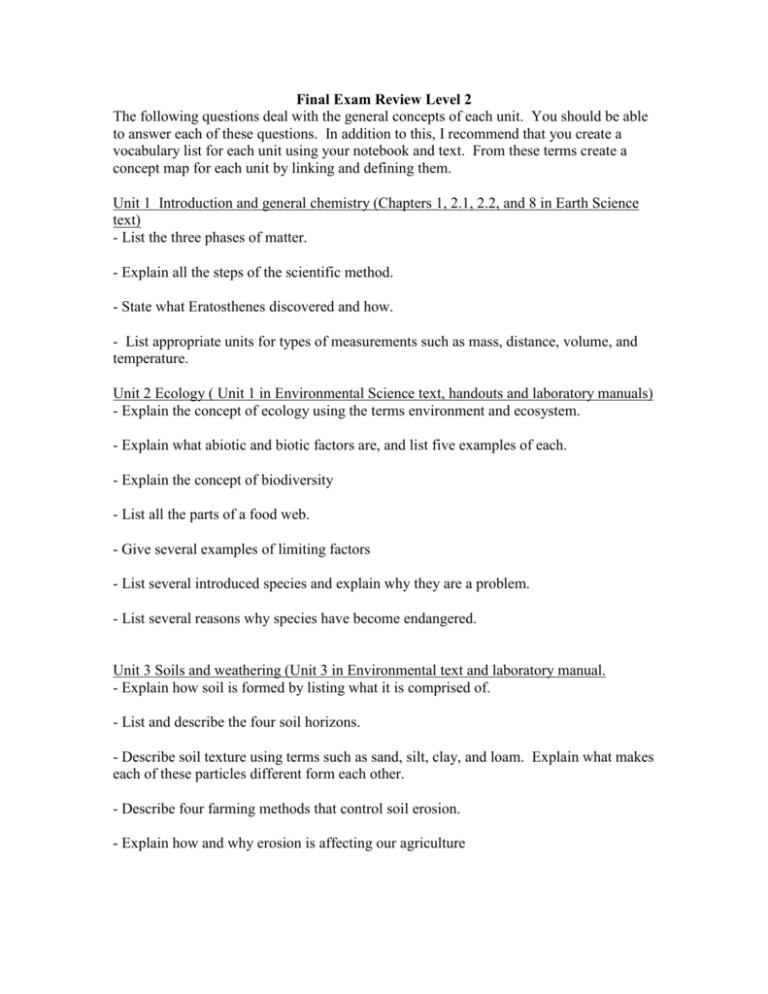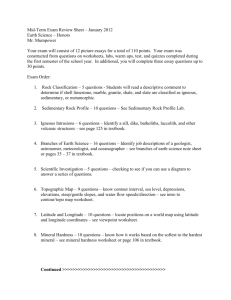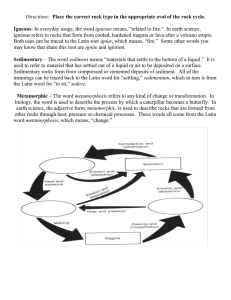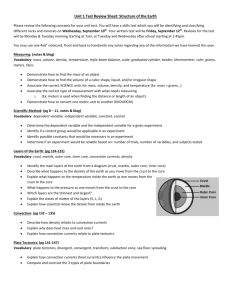Final Review Packet 2013
advertisement

Final Exam Review Level 2 The following questions deal with the general concepts of each unit. You should be able to answer each of these questions. In addition to this, I recommend that you create a vocabulary list for each unit using your notebook and text. From these terms create a concept map for each unit by linking and defining them. Unit 1 Introduction and general chemistry (Chapters 1, 2.1, 2.2, and 8 in Earth Science text) - List the three phases of matter. - Explain all the steps of the scientific method. - State what Eratosthenes discovered and how. - List appropriate units for types of measurements such as mass, distance, volume, and temperature. Unit 2 Ecology ( Unit 1 in Environmental Science text, handouts and laboratory manuals) - Explain the concept of ecology using the terms environment and ecosystem. - Explain what abiotic and biotic factors are, and list five examples of each. - Explain the concept of biodiversity - List all the parts of a food web. - Give several examples of limiting factors - List several introduced species and explain why they are a problem. - List several reasons why species have become endangered. Unit 3 Soils and weathering (Unit 3 in Environmental text and laboratory manual. - Explain how soil is formed by listing what it is comprised of. - List and describe the four soil horizons. - Describe soil texture using terms such as sand, silt, clay, and loam. Explain what makes each of these particles different form each other. - Describe four farming methods that control soil erosion. - Explain how and why erosion is affecting our agriculture - Explain the historical significance of pesticides. - Explain the side effects of DDT and the concept of bioaccumulation. - Explain the methods of integrated pest management. Unit 4 Water (Unit 4 in Environmental Science Text) - Explain what a watershed is - Create a diagram of the water cycle defining each process. - List the three characteristics of wetlands. - List at least five values of wetlands. Unit 5 Geology - rocks and mineral (Chapters 9 and 10) - Name four characteristics of minerals and explain five mineral properties. - Diagram the rock cycle by linking each stage by its appropriate process. - Describe the two ways igneous rocks form, and name five common igneous rocks. - List six different igneous rock structures as intrusive or extrusive. - Explain the three different types of sedimentary rock groups, and give an example of each. - Describe six sedimentary features by how they form. - Describe the two ways metamorphic rocks form. (Regional and Contact Metamorphism) - Explain how the two groups of metamorphic rocks differ, and name two examples of each group (Foliated and Non-Foliated) Unit 6 Energy and natural resources (Unit 5 in Environmental text, laboratory manual and chapter 11 in earth Science text) - List three examples of renewable and non-renewable resources. - List and briefly describe all the alternative energies used in this country by naming a pro and con for each one. Unit 7 Meteorology (Chapters 23,24, 25,and 26) - Name all the global winds, and relate them to high and low pressure. - Describe the Coriolis effect on global winds and high and low pressure systems. - Explain how convection and conduction differ, and how convection is responsible for both local and global winds. - Name the four layers of the atmosphere and give a characteristic of each. - List the gases of the atmosphere in their order of abundance. - Compare scattering, reflection, and the absorption of energy. Relate them to the greenhouse effect. - Explain how the electromagnetic spectrum changes from one end to the other. Rank the different forms of energy due to their wavelength. - In order of altitude, name seven cloud types and what they indicate. - Explain the greenhouse effect and how it may contribute to global climate change. - Explain the problem with the ozone layer and what effects of this problem.. - State the equation for air pressure (# molecules/area). Unit 8 Geological history (Chapters 4.1, 4.2, 17, 18, and 19) - Name the three types of plate movements, and give an example of what they form. - List the four eras of geological time and know the general order of major occurrences throughout the earth’s history.











